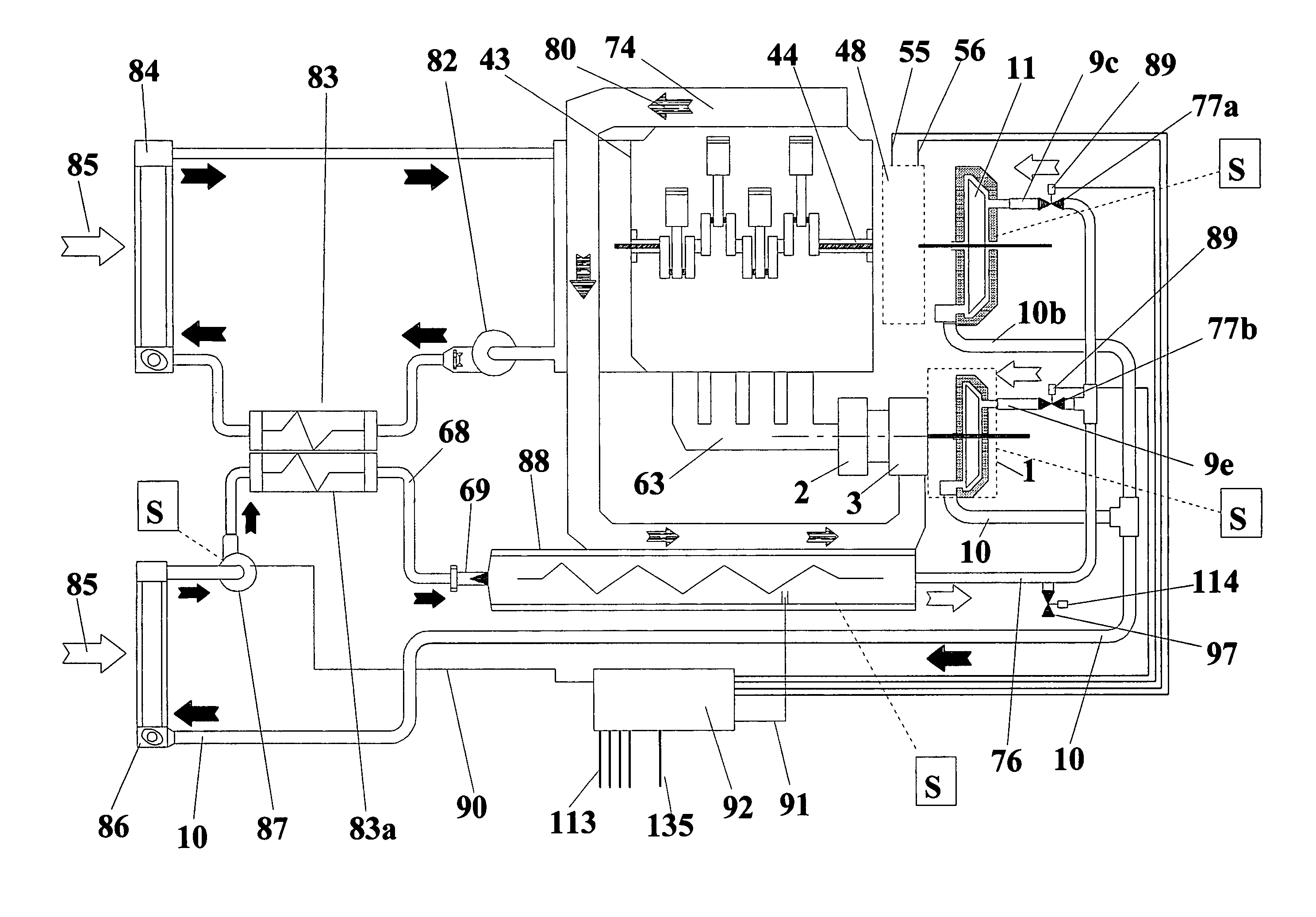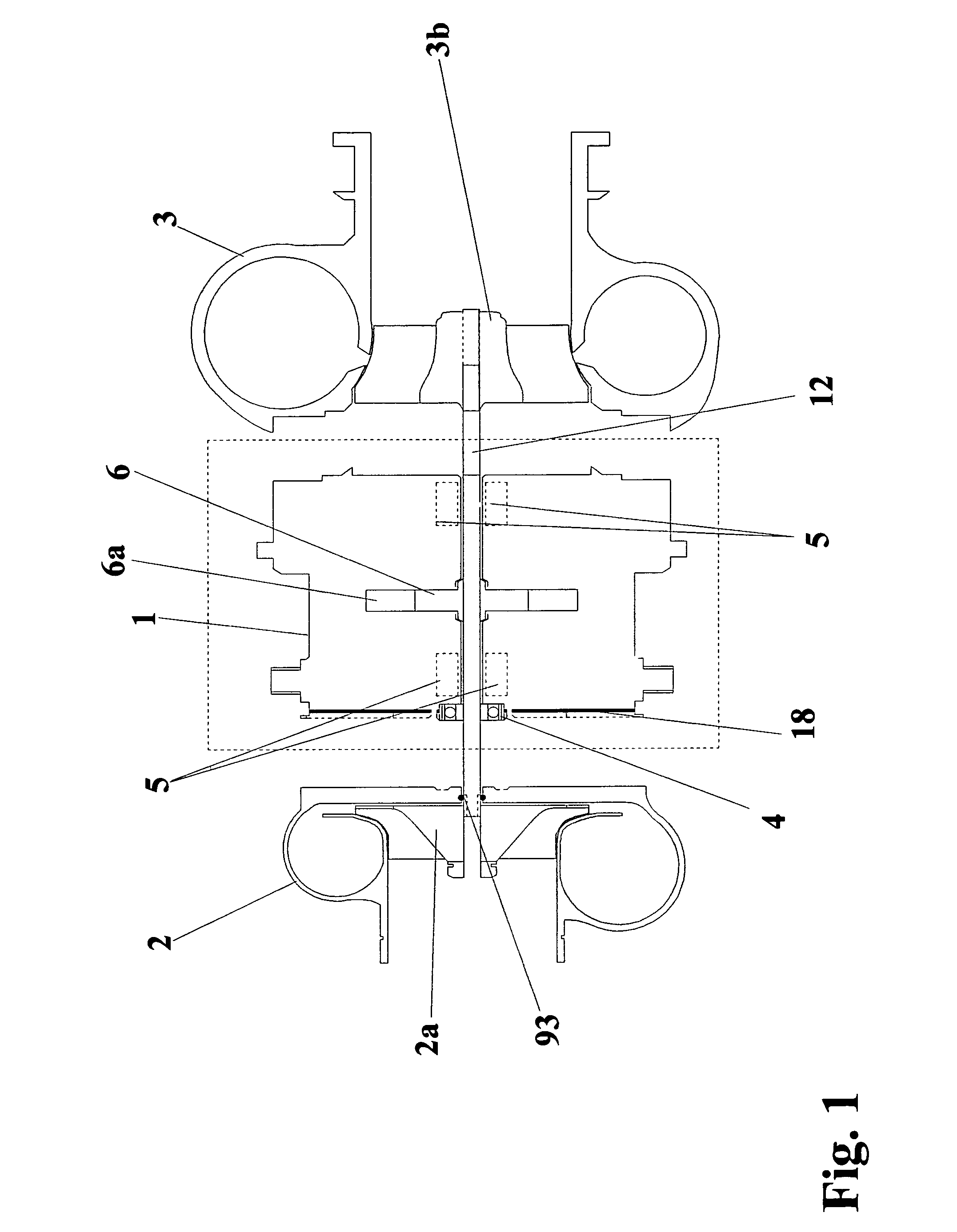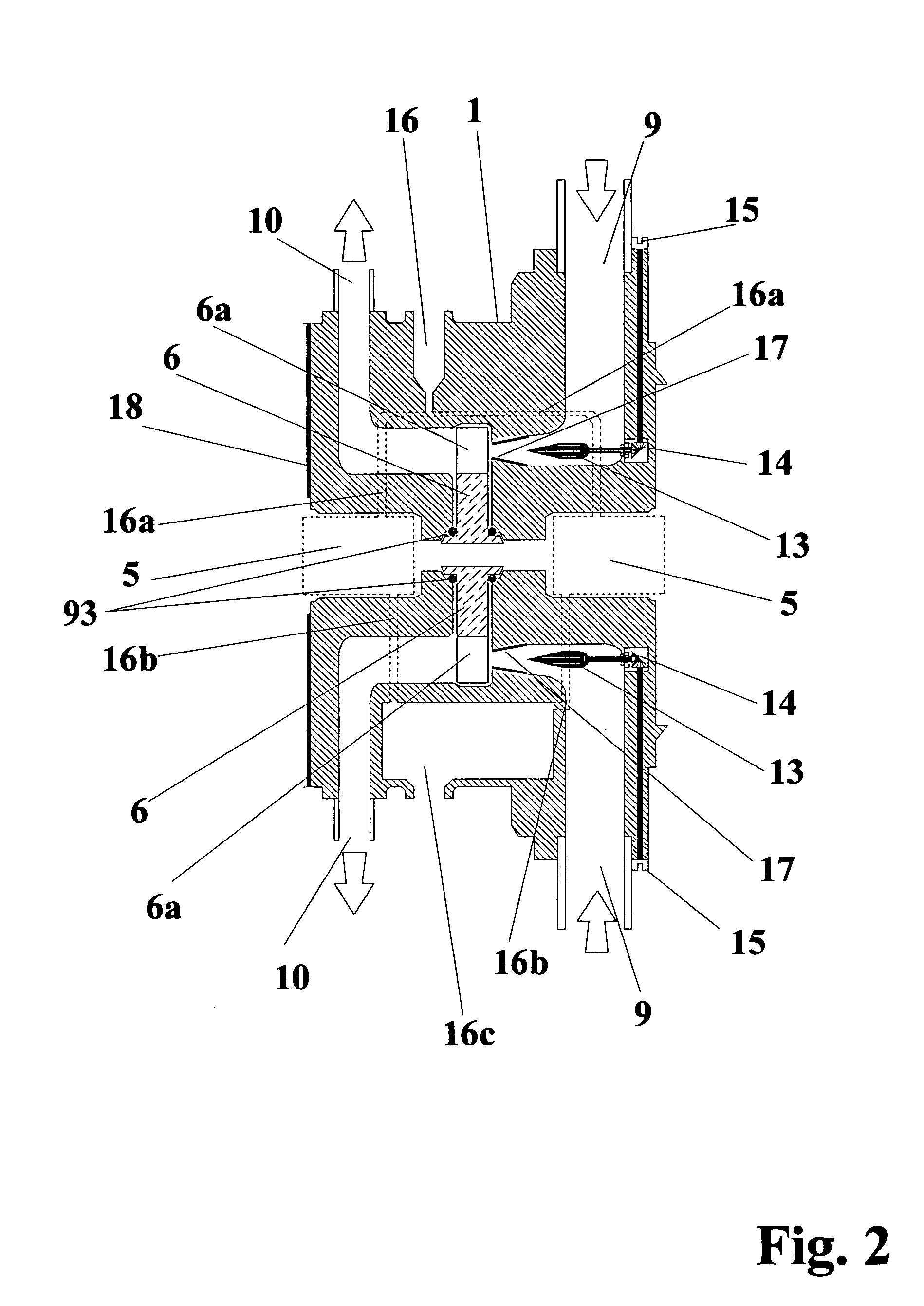Miniaturized waste heat engine
a waste heat engine, miniaturized technology, applied in steam engine plants, machines/engines, mechanical equipment, etc., can solve the problems of high cost, high cost, and high cost, and achieve the effect of reducing engine pollution, improving overall engine efficiency, and improving engine performan
- Summary
- Abstract
- Description
- Claims
- Application Information
AI Technical Summary
Benefits of technology
Problems solved by technology
Method used
Image
Examples
Embodiment Construction
[0036]The working principles of the MWHE of the present invention are now described by utilizing the schematics and representations shown in FIG. 1-18.
[0037]The thermodynamic steps of the MWHE's cycle are represented in FIGS. 17, and 17A. Since the MWHE is formed by the combination of several sub-components, each of them characterized by unique features, the description of the MWHE should be somewhat simplified by describing the sub-components first. The most important sub-components of the MWHE cycle, expanders, converters, imploders, oxygenators and their applications are described in FIG. 1-16. FIGS. 17 and 17A, and basically provide the overall hydraulic connection and method of operation of each sub-component as part of a single device: the MWHE as a plant. Therefore, the basic components of a centrifugal compressor modified to integrate the vapor expander block of the MWHE are shown in FIG. 1. The body of the expander 1 is comprised inside the dashed block of FIG. 1. The vapor...
PUM
 Login to View More
Login to View More Abstract
Description
Claims
Application Information
 Login to View More
Login to View More - R&D
- Intellectual Property
- Life Sciences
- Materials
- Tech Scout
- Unparalleled Data Quality
- Higher Quality Content
- 60% Fewer Hallucinations
Browse by: Latest US Patents, China's latest patents, Technical Efficacy Thesaurus, Application Domain, Technology Topic, Popular Technical Reports.
© 2025 PatSnap. All rights reserved.Legal|Privacy policy|Modern Slavery Act Transparency Statement|Sitemap|About US| Contact US: help@patsnap.com



